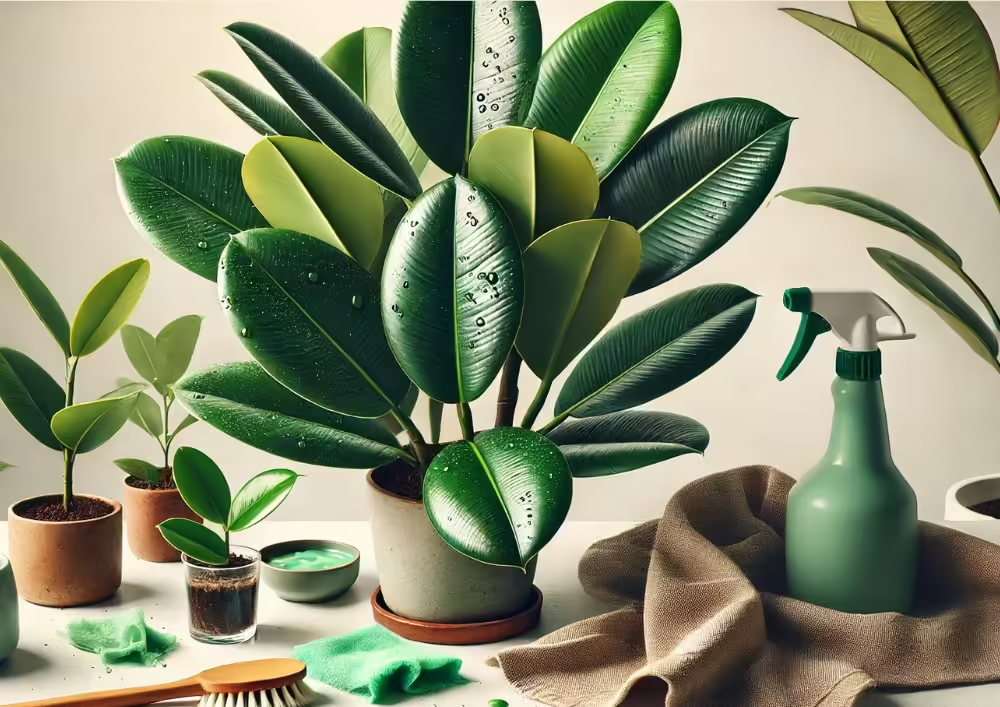Rubber Plant Care Guide – Essential Tips for Happy, Healthy Plants
Ficus Elastica is commonly known as the rubber plant or rubber tree and it gets its name from the white latex sap. It produces that used to be used to make rubber back in the day.
Whenever I used to see one of these plants pop up on a houseplant website, I would always actually assume that they were fake and made out of rubber, just because of how shiny and robust they looked. Because they almost don’t look real.
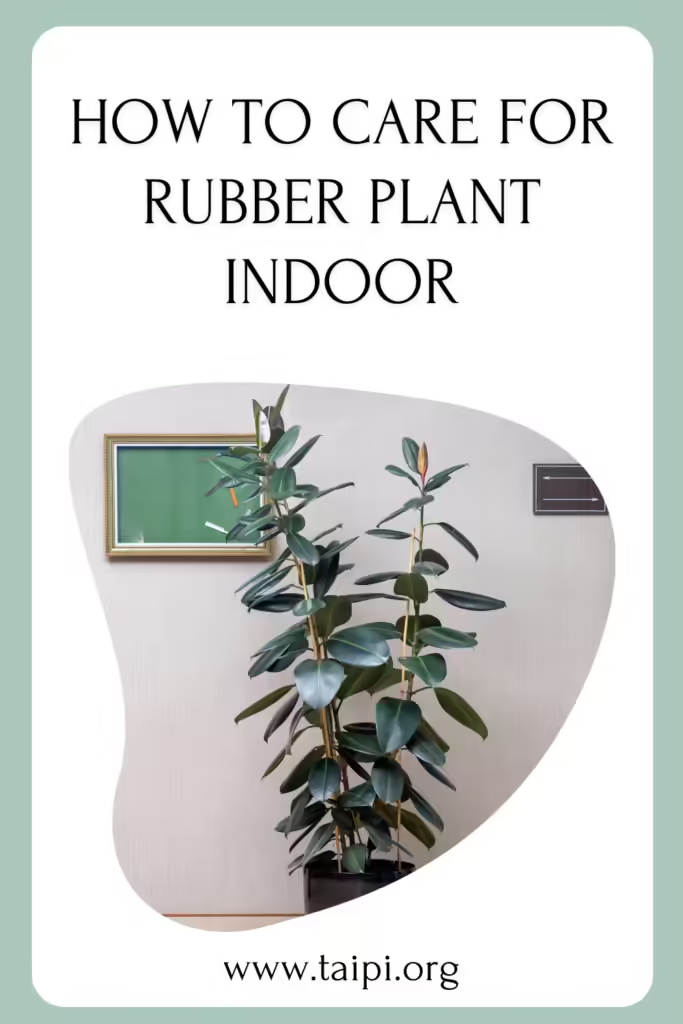
In this post, I am sharing some tips & tricks from my experience to care for your rubber plant.
Proper Watering
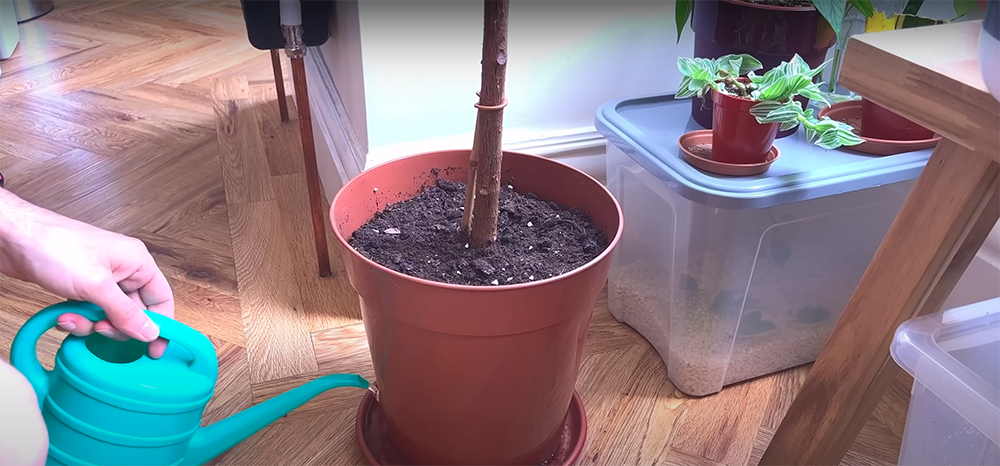
First of all, let’s talk about over-watering. What does it actually mean? Over-watering means that you’re giving the plant too much water for its needs. To understand this though we need to understand what rubber trees are like. The rubber tree is part of the Ficus family. His brothers and sisters include The Ficus Benjamina and the very popular Fiddle-leaf fig and pretty much all Ficus plants do not like to have soggy soil and the rubber tree is no different.
So, if you are watering this plant on a weekly schedule, say every Saturday and not letting the soil dry out in between watering, then you’re probably overwatering the plant and it will drop some leaves.
My advice is to check the soil of the plant before watering by sticking your finger into the soil or using a moisture meter. it’s especially important here don’t be shy and stick your finger in a couple of inches into the soil the plant won’t mind I promise.
If you feel moisture, then simply wait another few days and then check again. the soil will be wetter the lower down the pot you go, so if the top two inches are wet then it has enough moisture in the pot.
My favorite plant accessory is the moisture meter. It will tell you exactly how wet the soil is. So please only water when your probe is dry. Because your rubber tree’s life depends on it.
Ficus plants do need to dry out in between watering. Keeping the roots consistently wet will result in root rot. Eventual plant death is this constant wetness that does the damage and not the quantity of water you give it when you do come to water it.
You can merrily pour water over the top as much as you want as long as you let it dry out before you do so again. As a rule of thumb, I water my rubber tree once every two weeks in the spring and summer and once a month during the winter. But it really does depend on your climate.
If you’re in sunny California, then you probably need to water a little more frequently due to the warmer year-round temps. To identify if you’ve been overwatering your plant, you should check the soil of the plant to see how soggy it is.
Focus on Root System
The roots of a rubber tree are like the foundations of the plants. we all know that if the foundations of our house are not sound then we won’t have too many Christmases in that house. So if the roots are in poor health, will the foliage be a root-bound rubber tree will mean that the plant is not getting sufficient water and vital nutrients to feed its growth.

This usually eventually leads to Leaf Drop, I know it can be a real bind to check the roots of your plants every year. But, this is one of the most important things you can do. I normally set aside an afternoon in spring and check all my plants at once and then the job is done for that year.
You’d be super surprised at how many of your plants are root bound. I check and repot my house plants every spring or at least every other spring to give the roots the chance to spread out into the pot during the growing season.
The best way to tell if your rubber tree is root bound is to take the plant out of the pot and inspect the roots. Rubber trees don’t tend to mind being a little bit root bound you can expect to see some roots in the pot. Don’t Panic at the first sign of a root and not part into a larger container so we’d probably be too soon.
When the roots of the plant significantly outweigh the amount of soil in the pot, it needs to be potted up into a pot one or two sizes bigger. Soil is much better at retaining moisture The Roots soil retains the moisture and keeps the roots of the plant moist which allows it to push out new Growth. if there isn’t enough soil in the pot, then the roots drink the water you give it pretty much straight away it needs to be watered again soon.
Placement of the Rubber Plant

Ficus plants like lots of indirect sunlight and rubber trees are no different Leaf
Drop can be a sign that your rubber tree is not getting enough light.
I find that this plant can even tolerate a few hours of Morning Sun each day. I have mine in front of my east-facing dining room window so on rare occasions. we’re lucky enough to get some sun here. It gets about four hours or five hours of direct sun on those days.
Don’t get me wrong. Because this will be entirely dependent on your climate. In my area, the morning sun doesn’t get so strong. As a result, it scorches the leaves on my plants. keep this plant in a spot that gets little natural light through. It really won’t be happy and you may be seeing some Leaf drops. this is particularly true if you’re watering your plant weekly and have it in a dark spot.
Rubber trees perspire water when they grow vigorously in a bright spot, so keeping yours in the dark will spell trouble for it. You will need to wait longer between watering your plant than if you had it on a South facing window where it gets lots of sunlight blindly.
Watering weekly and you’ll essentially be over Watering your plant which comes with all the problems that I mentioned earlier.
If you do have your plant in a warm spot in your home then you need to be mindful of how often you are watering the plant to prevent it from drying out and dropping some leaves.
But, never make assumptions about your plant though. Always check the soil with your moisture meter before watering, no matter where it is in your home.
Rubber Plant Pest Control
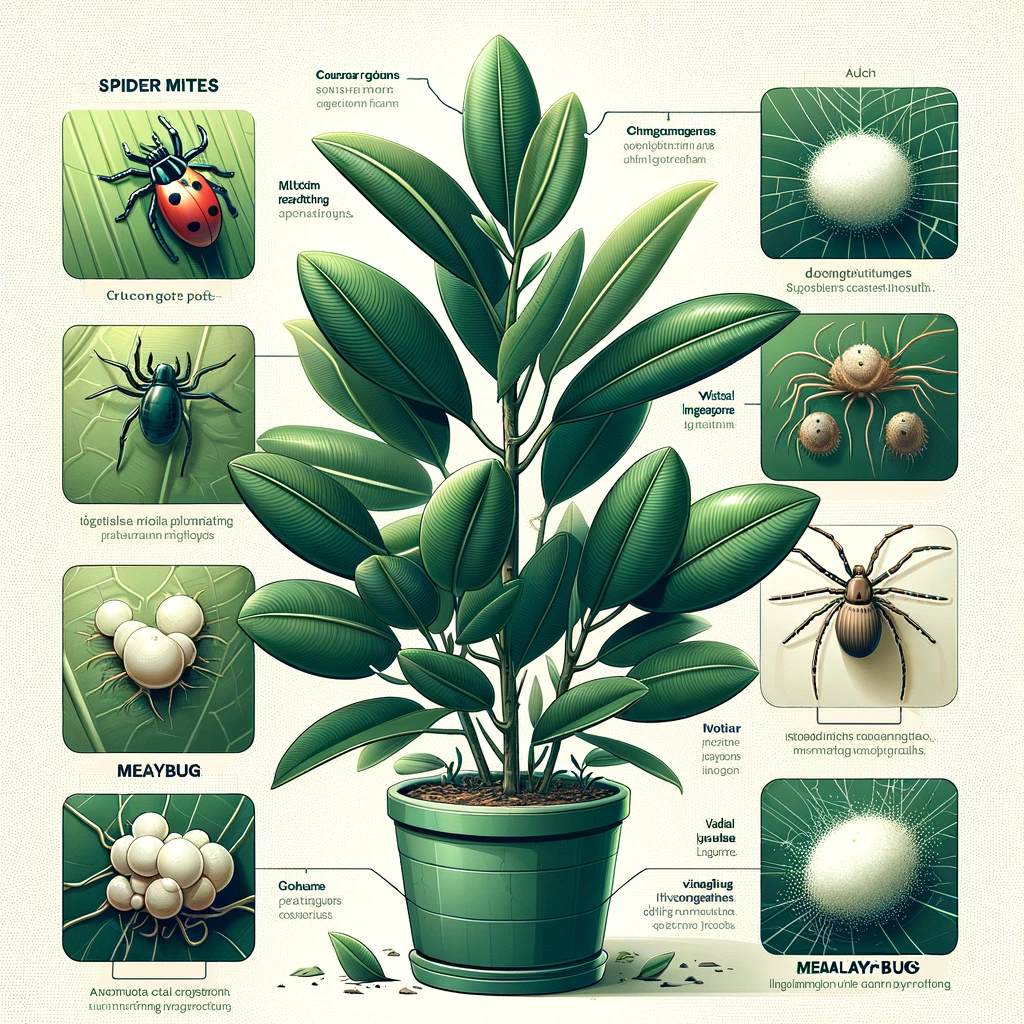
We have to talk about pests. Luckily, it’s very rare that you get tests on the Rubber Plant. However, if you haven’t given it the right amount of water, if it dries out a little bit too much in between every watering it can get pests and usually, it’s mites. The problem with mites is that they are so small that we can’t see them with the naked eye. So we only notice them when there are millions or billions of them on your rubber plant.
Usually, mites always attack the juiciest leaves on the plant. The juiciest leaves are always the latest ones. So always keep an eye on the top leaves and make sure that they always look good.
Because if you see something or the green nice lush color is starting to turn a little bit yellow & but you can’t see it anywhere else on the plant, then that is a signal that you might have a pest problem.
Mites are easy to get rid of. You can just buy some type of pesticide follow the instructions and then get rid of the mites.
If you’re Watering your plant correctly and have it in a bright spot in your home and you’re still seeing some Leaf Drops, then something more Sinister may be happening. Pests are a surprisingly common problem for houseplants. But unfortunately for most plant parents ignorance is bliss.
For the longest time, I just didn’t want to believe that there could be any bugs on my plants so I didn’t bother checking them that was until I lost croton to spider mites. So pests are a real problem and a potential reason your rubber tree could be losing some leaves.
So, we need to rule out the major players. Spider mites are tiny arachnids that live on and Munch away at the leaf tissue of house plants. They are crafty little buggers because they’re too small to see. So it go largely unnoticed until we start to notice that our plant is dying.
Sadly though, at this point, the population has grown out of control and has essentially taken over the plant sucking the sap from the leaves in the process.
This weakens the plant and it starts to drop leaves. So, give your rubber tree a thorough check-over. You may see any spotting on the leaves or fine webbing on the stems and underside of the leaves. Because the webbing is the biggest giveaway you need to look very closely with a light. If you do notice these things, then you have a spider mite problem.
Spider mites hate moisture. So the remedy is to hose the plant down and treat it with an insecticide to stop them from coming back. Spider mites aren’t the only pest. If you’ve got what looks like little blobs of cotton on the stems and leaves then I’m afraid you’ve got mealy bugs which you can treat by dabbing them with rubbing alcohol. Another test for
bugs is to shake the foliage over a white sheet of paper and check to see if any tiny black specks are moving around. If this is the case, then you probably have bugs.
So you immediately have to have treatments for these bugs which may kill your plant.
Stop Yellow Leaves
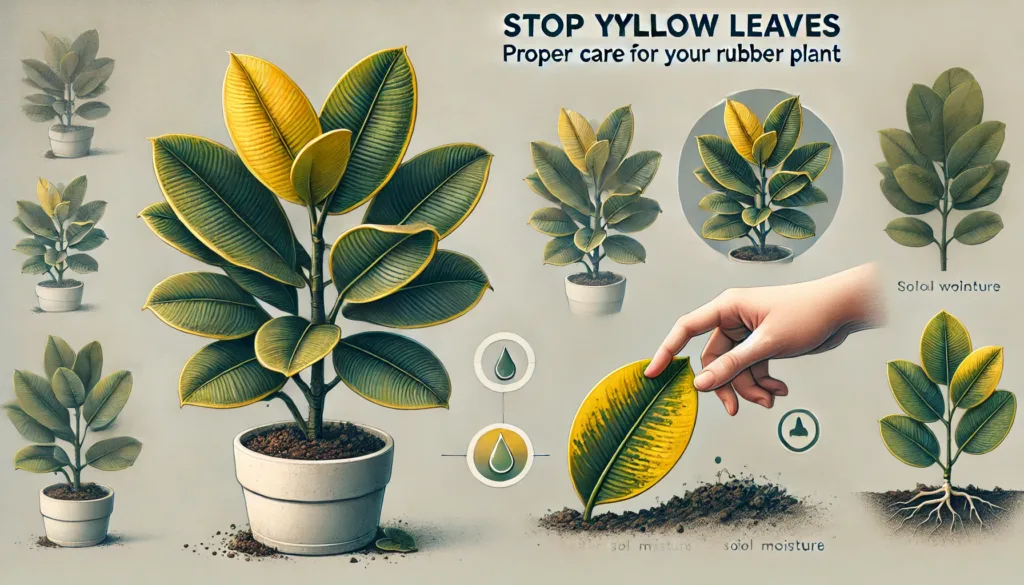
If your Ficus Elastica ( Rubber Plant ) starts to get yellow leaves and usually it’s the oldest leaves meaning the leaves that are down by nearby the soil. If they start to get yellow that means that you haven’t watered your plant enough.
Don’t give more water, just increase the frequency with how often you water. So make sure that you feel the soil as soon as it starts to get dry on top, you add water again.
As I explained earlier, increase the frequency, not the amount of water you’re giving.
Also, make sure you fertilize your plant in the right way.
Rinse the leaves once a month

Ficos Elastica & all varieties have these huge & really nice leaves. But a good tip is that every month you take a cloth such as a microfiber cloth used for cleaning. You can use any type of cloth & soak this in water and rinse off or wipe off the leaves once a month.
Because, since you have these huge leaves like this a lot of dust is going to fall on the leaves. It can be another type of particle and you may have seen your rubber plants started to look a little bit shaded. If you want them to look lush and really stand out and be shiny, just take your water-soaked cloth and wipe off the leaves.
Instantly you will get that really nice shine again to the leaves.
As a bonus, if you do this once a month that means that you are so close to the plant that you can also check to see if you have any pests. Because usually, they arrive on the underside of the leaf. So when you wipe off the top side of the leaf, take a look at the underside as well to see that you can’t see any pests.
Don’t be afraid to prune your Ficus Elastica ( Rubber Plant )
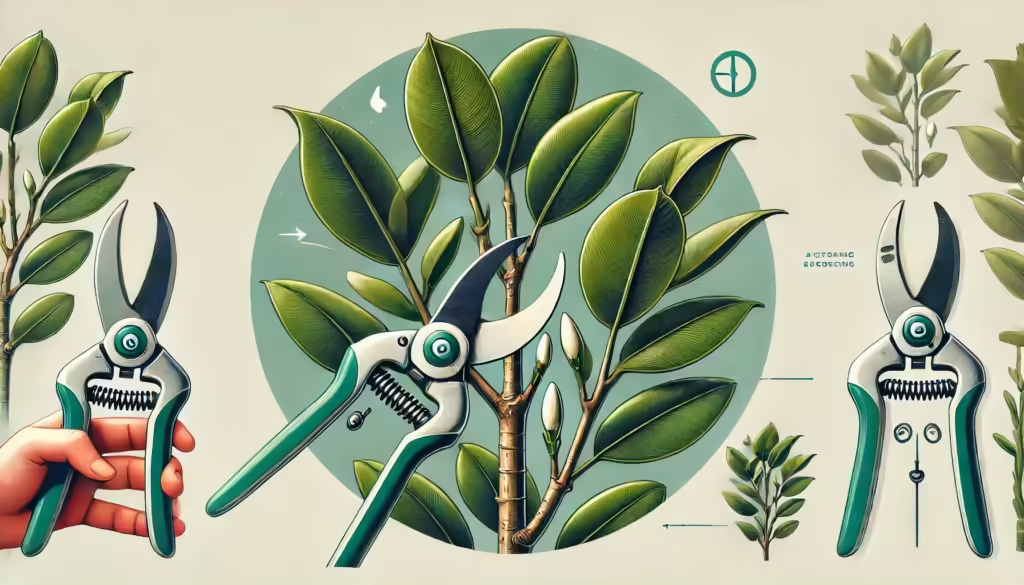
Now some types of rubber plants can be quite hard to prune or quite hard to get to branch out. Like the Ficus lyrata or the fiddly fig instance, this is not the case with the rubber plants. You can prune that and you can prune it almost all year around.
I would not recommend you prune during winter. Because it goes a little bit dormant. But, any other time of the year works perfectly. So just go in and prune in between two leaves in the internode in between two nodes or two leaves, and cut off.
When you’re doing that is that you will activate buds further down the stem. you can actually see a small bud and then you can also see where it will start to branch out.
If you prune during spring or autumn when the plant is active, you can have a lot of buds getting activated at the same time. So the plant will start to branch out and become fuller.
Always consider when you’re pruning a Rubber Plant because most ficus plants bleed when you cut a Rubber Plant, you will have a white sap that will start to bleed a little bit.
It’s not a problem for the plant. The Ficus Elastica doesn’t care. But that white sap can actually for some people give an allergic reaction. So use gloves and make sure that you’re not getting that white sap anywhere on your body.
Summery
Caring for a Ficus Elastica, commonly known as the rubber plant, can be straightforward if you understand its needs and habits. Its glossy, almost unreal-looking leaves make it a popular choice for plant enthusiasts. By following these guidelines, your rubber plant will flourish, adding lush greenery to your space. Proper care and regular checks ensure a long, healthy life for this striking houseplant.

